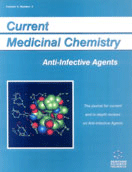Abstract
By the early nineteen seventies the mechanism of inhibition of peptidoglycan biosynthesis by various cell wallactive antibiotics was well established, and the Gram-positive bacterium Staphylococcus aureus had often been used in the studies. From the early days of penicillin it was known that cell wall-active antibiotics are typically bactericidal causing cell death and lysis, a phenomenon that has recently been described as programmed cell death. Uncovering the details of the molecular and cellular events occurring subsequent to inhibition of peptidoglycan biosynthesis, a legitimate aspect of knowledge of the mode of action of these agents, has had to await the advent of the omics era-genomics, proteomics and transcriptomics-over the past several years. Genome-wide transcriptional profiling using DNA microarrays of the response of S. aureus to challenge by cell wall active antibiotics has revealed a cell wall stress stimulon of genes upregulated in their expression by these agents. Several of the genes encode proteins involved in cell wall metabolism and their induction can be regarded as a response of the organism to preserve and repair the compromised cell wall. Expression of a significant number of cell wall stress stimulon member genes is controlled by a two-component regulatory system. Cell wall stress stimulons regulated by two-component systems have also been described in Bacillus subtilis and Listeria monocytogenes, and are probably common to all Gram-positive bacteria. Unfortunately S. aureus has not remained susceptible to cell wall-active antibiotics and methicillin-resistant strains are common, and vancomycinintermediate and-resistant strains have arisen. Interestingly, some member genes of the cell wall stress stimulon have been previously encountered in the context of methicillin-resistance or vancomycin-intermediate resistance. There is a threat of pan-resistant S. aureus strains and new antimicrobial agents are needed. Cell wall biosynthesis remains a viable target for new drugs, and recognition of the transcriptomic signature of the cell wall stress stimulon can be used to indicate a cell wall mode of action. Individual cell wall stress member genes may form the basis of a screen for cell wall-active agents. Finally, agents targeting cell wall stress stimulon member gene expression or proteins might enhance the activity of cell wall-active agents that induce the cell wall stress stimulon.
Keywords: cell wall stress stimulon, cell wall antibiotics, gram-positive bacteria, staphylococcus aureus
 6
6

